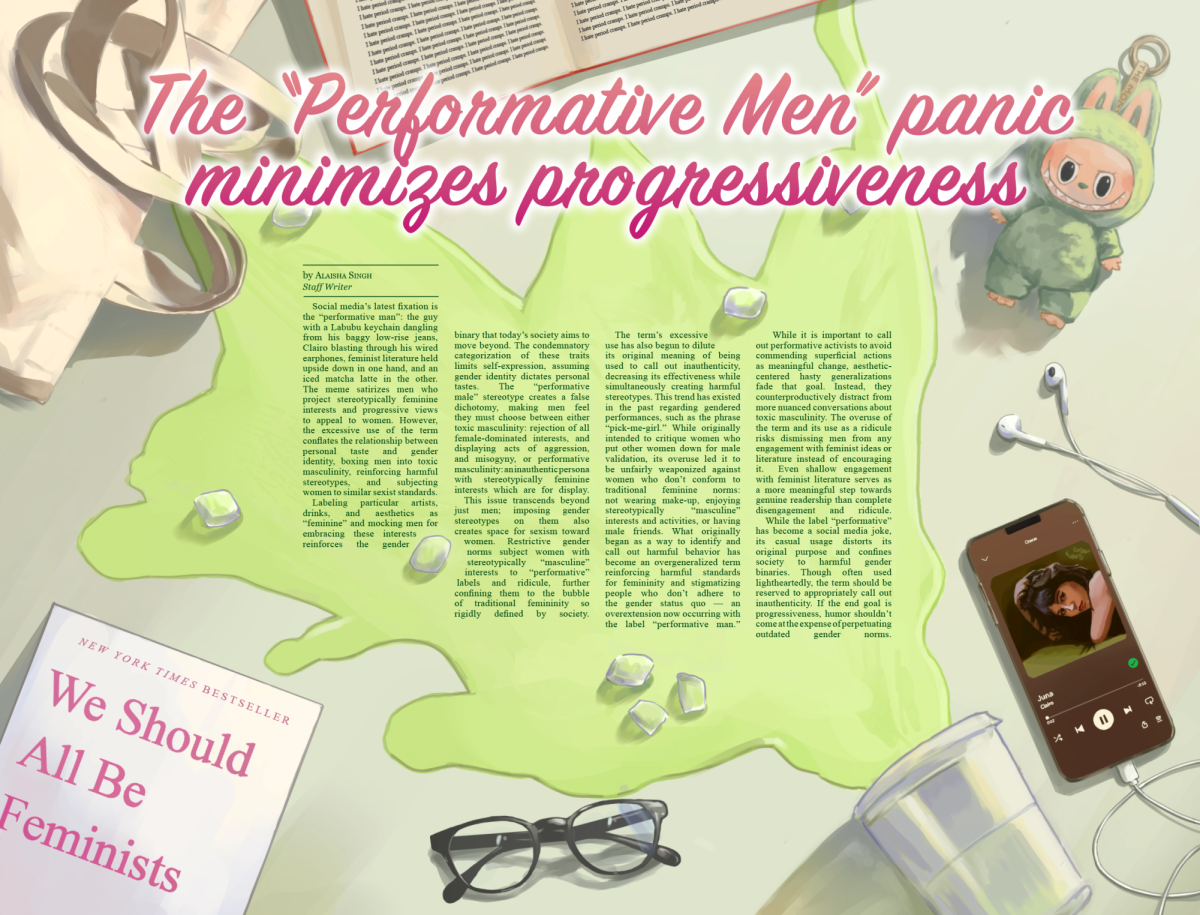Social media’s latest fixation is the “performative man”: the guy with a Labubu keychain dangling from his baggy low-rise jeans, Clairo blasting through his wired earphones, feminist literature held upside down in one hand, and an iced matcha latte in the other. The meme satirizes men who project stereotypically feminine interests and progressive views to appeal to women. However, the excessive use of the term conflates the relationship between personal taste and gender identity, boxing men into toxic masculinity, reinforcing harmful stereotypes, and subjecting women to similar sexist standards.
Labeling particular artists, drinks, and aesthetics as “feminine” and mocking men for embracing these interests reinforces the gender binary that today’s society aims to move beyond. The condemnatory categorization of these traits limits self-expression, assuming gender identity dictates personal tastes. The “performative male” stereotype creates a false dichotomy, making men feel they must choose between either toxic masculinity: rejection of all female-dominated interests, and displaying acts of aggression, and misogyny, or performative masculinity: an inauthentic persona with stereotypically feminine interests which are for display.
This issue transcends beyond just men; imposing gender stereotypes on them also creates space for sexism toward women. Restrictive gender norms subject women with stereotypically “masculine” interests to “performative” labels and ridicule, further confining them to the bubble of traditional femininity so rigidly defined by society.
The term’s excessive use has also begun to dilute its original meaning of being used to call out inauthenticity, decreasing its effectiveness while simultaneously creating harmful stereotypes. This trend has existed in the past regarding gendered performances, such as the phrase “pick-me-girl.” While originally intended to critique women who put other women down for male validation, its overuse led it to be unfairly weaponized against women who don’t conform to traditional feminine norms: not wearing make-up, enjoying stereotypically “masculine” interests and activities, or having male friends. What originally began as a way to identify and call out harmful behavior has become an overgeneralized term reinforcing harmful standards for femininity and stigmatizing people who don’t adhere to the gender status quo — an overextension now occurring with the label “performative man.”
While it is important to call out performative activists to avoid commending superficial actions as meaningful change, aesthetic-centered hasty generalizations fade that goal. Instead, they counterproductively distract from more nuanced conversations about toxic masculinity. The overuse of the term and its use as a ridicule risks dismissing men from any engagement with feminist ideas or literature instead of encouraging it. Even shallow engagement with feminist literature serves as a more meaningful step towards genuine readership than complete disengagement and ridicule.
While the label “performative” has become a social media joke, its casual usage distorts its original purpose and confines society to harmful gender binaries. Though often used lightheartedly, the term should be reserved to appropriately call out inauthenticity. If the end goal is progressiveness, humor shouldn’t come at the expense of perpetuating outdated gender norms.




























































